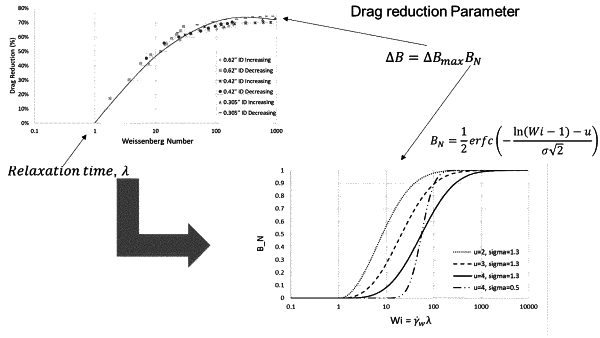| CPC C09K 8/62 (2013.01) [C09K 8/602 (2013.01); E21B 43/26 (2013.01); E21B 47/00 (2013.01); G01N 11/04 (2013.01); G06F 30/28 (2020.01); C09K 2208/08 (2013.01); C09K 2208/28 (2013.01)] | 24 Claims |

|
10. A process comprising:
preparing a fluid mixture for an oil field operation or a pipeline operation, the fluid mixture comprising a concentration of a drag reducing agent determined based on a drag reduction parameter ΔB for the fluid mixture; and
using the fluid mixture in the oil field operation or the pipeline operation;
wherein the process further comprises:
measuring one or more fluid properties of the fluid mixture in a laboratory, a flow loop, a portable apparatus, or any combination thereof;
determining a small-scale drag reduction parameter ΔB for the fluid mixture based on the one or more fluid properties of the fluid mixture measured in the laboratory or the flow loop; and
upscaling the small-scale drag reduction parameter ΔB for use in the oil field operation or the pipeline operation;
wherein an analytical model is used for upscaling the small-scale drag reduction parameter ΔB for use in the oil field operation or the pipeline operation;
wherein the drag reduction parameter ΔB is defined by an equation:
ΔB=ΔBmaxBN
wherein
BN=0 for Wi<1 and
BN=CDF for 0<BN<1
wherein ΔBmax is maximum drag reduction at Wi>>1, BN is normalized drag reduction as a function of shear, Wi=γwλ is Weissenberg number, γw is the wall shear rate, λ is the longest relaxation time, and CDF is a cumulative distribution function.
|